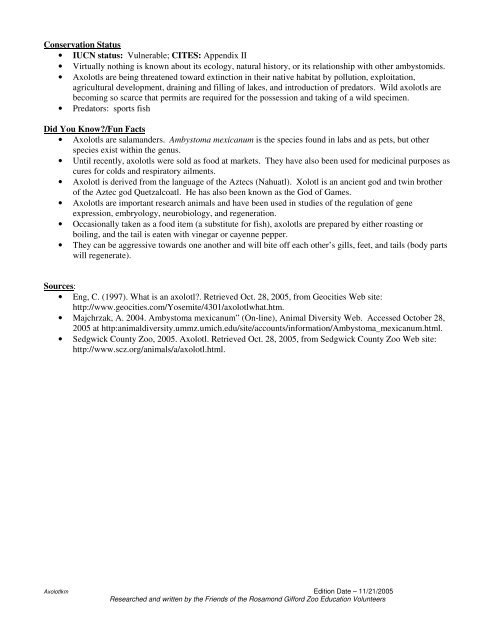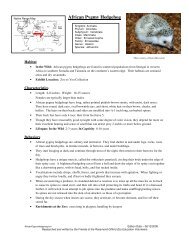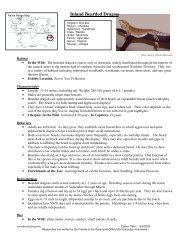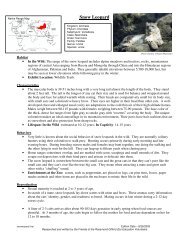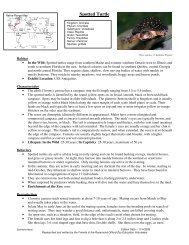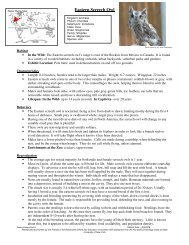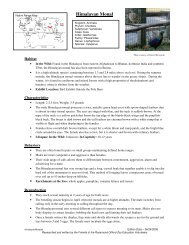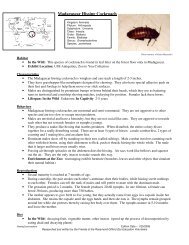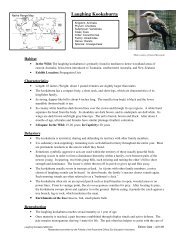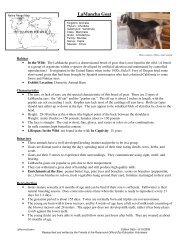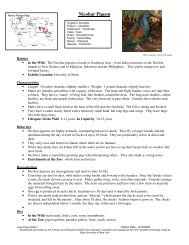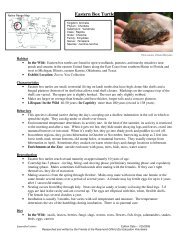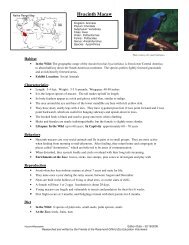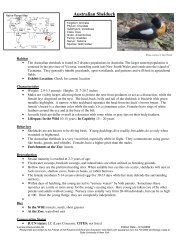Axolotl - Rosamond Gifford Zoo
Axolotl - Rosamond Gifford Zoo
Axolotl - Rosamond Gifford Zoo
Create successful ePaper yourself
Turn your PDF publications into a flip-book with our unique Google optimized e-Paper software.
Conservation Status<br />
• IUCN status: Vulnerable; CITES: Appendix II<br />
• Virtually nothing is known about its ecology, natural history, or its relationship with other ambystomids.<br />
• <strong>Axolotl</strong>s are being threatened toward extinction in their native habitat by pollution, exploitation,<br />
agricultural development, draining and filling of lakes, and introduction of predators. Wild axolotls are<br />
becoming so scarce that permits are required for the possession and taking of a wild specimen.<br />
• Predators: sports fish<br />
Did You Know/Fun Facts<br />
• <strong>Axolotl</strong>s are salamanders. Ambystoma mexicanum is the species found in labs and as pets, but other<br />
species exist within the genus.<br />
• Until recently, axolotls were sold as food at markets. They have also been used for medicinal purposes as<br />
cures for colds and respiratory ailments.<br />
• <strong>Axolotl</strong> is derived from the language of the Aztecs (Nahuatl). Xolotl is an ancient god and twin brother<br />
of the Aztec god Quetzalcoatl. He has also been known as the God of Games.<br />
• <strong>Axolotl</strong>s are important research animals and have been used in studies of the regulation of gene<br />
expression, embryology, neurobiology, and regeneration.<br />
• Occasionally taken as a food item (a substitute for fish), axolotls are prepared by either roasting or<br />
boiling, and the tail is eaten with vinegar or cayenne pepper.<br />
• They can be aggressive towards one another and will bite off each other’s gills, feet, and tails (body parts<br />
will regenerate).<br />
Sources:<br />
• Eng, C. (1997). What is an axolotl. Retrieved Oct. 28, 2005, from Geocities Web site:<br />
http://www.geocities.com/Yosemite/4301/axolotlwhat.htm.<br />
• Majchrzak, A. 2004. Ambystoma mexicanum” (On-line), Animal Diversity Web. Accessed October 28,<br />
2005 at http:animaldiversity.ummz.umich.edu/site/accounts/information/Ambystoma_mexicanum.html.<br />
• Sedgwick County <strong>Zoo</strong>, 2005. <strong>Axolotl</strong>. Retrieved Oct. 28, 2005, from Sedgwick County <strong>Zoo</strong> Web site:<br />
http://www.scz.org/animals/a/axolotl.html.<br />
<strong>Axolotl</strong>km Edition Date – 11/21/2005<br />
Researched and written by the Friends of the <strong>Rosamond</strong> <strong>Gifford</strong> <strong>Zoo</strong> Education Volunteers


